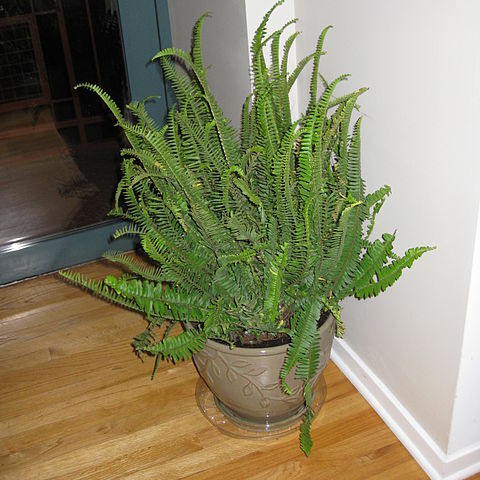Habit, rhizome morphology. Plants forming tufts of 3 or 4 fronds. Runners 1-2 mm thick, branching angle divaricate. Scales on runners very sparse or sparse, appressed or spreading. Tubers absent. Fronds 100-170 cm long (or more), 12-33 cm wide, stipe 36-80 cm long. Lamina base truncate, tapering over 20-40 cm, reduced basal pinnae 4-8 cm distant, middle pinnae slightly to distinctly falcate. Sterile pinnae 6-15 by 1.3-2.4 cm, herbaceous, thick, base strongly unequal, basiscopic base rounded, acroscopic base cuneate or truncate, not auricled, margin in basal part crenate, apex acuminate or caudate, cauda to 3 cm long. Fertile pinnae 7-17 by 0.9-2.1 cm, more strongly dentate between the sori and more gradually narrowed than the sterile pinnae to an acute apex without a distinct cauda. Indument. Basal scales peltate, appressed (rather sparse), 2.5 by 1 mm, central part dark brown, dull, hyaline margin wide, distinct, fimbriate in basal part, marginal glands absent. Transition to rhachis scales abrupt. Rhachis scales very sparse, without a distinctly protracted acumen, appressed and often very inconspicuous, hyaline. Scales on lamina absent. Hairs on lamina absent, costa absent. Sori marginal (often on teeth), 30-45 pairs on fully fertile pinnae, round. Indusium reniform, with narrow sinus or reniform, with open sinus, attached at sinus.
More
Stolons and basal portions of stipes scaly; scales lanceolate, red-brown, with pale margins (sparse except at growing node), with few to many short or long marginal cilia. Fronds to 1.75 m long; rachis usually glabrous, occasionally with scattered scales. Pinnae relatively widely-spaced, occasionally with a small rounded auricle. Sterile pinnae 20-160 mm long, 15-25 mm wide, usually glabrous; base often obliquely truncate; margins shallowly crenate; upper midrib occasionally with simple hairs; apex acute except in basal pinnae. Fertile pinnae 60-160 (-240) mm long, 5-15 (-20) mm wide; margins more deeply crenate. Sori submarginal; indusium reniform.

